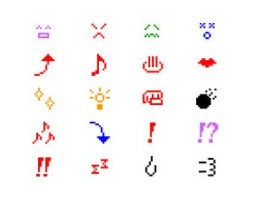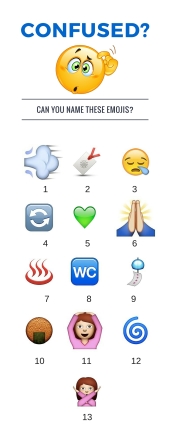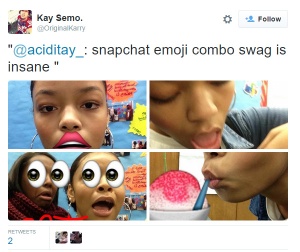
- What did David mean by “content is king”?
David Salinas mentioned the phrase “content is king.” As far as I could tell through my own research, the term “content is king” originated in the magazine industry more than 40 years ago. Why then, did the phrase only become popular after Bill Gates used it in an article he wrote in 1996? This phrase has become the mantra of marketing agencies around the globe in the last decade and there is good reason for its popularity surge.
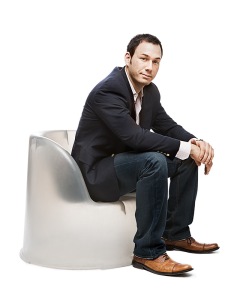
David Salinas
The magazine industry in the 1970’s was competitive and constantly evolving. Editors spent all of their energy and resources trying to create content that would entice new readership. Sound familiar? It should, today’s world is dominated by the internet. The internet is the modern day equivalent to the California Gold Rush of the mid-19th century. Except instead of gold, today’s prospectors are looking for information.
Information is the key to creating and marketing great content, so in a sense the more truthful phrase should be “information is king”. Only an informed person can create great content, but creating the content is only half the battle. After you create something great to promote, whether it is a visual masterpiece or an essay that would make Mark Twain jealous, you still need to market it. Having great content that nobody sees is about as useful as a refrigerator at the North Pole.
On the internet as well as with television, radio and print mediums, great content always draws more attention. More attention means more shoppers for what you’re selling, more people for what you’re promoting and more markets for what you are marketing. With great content and proper search engine optimization (SEO), a small staff, or even a lone producer of content, now has the ability to reach thousands even millions of people quickly. Witty or humorous social media post have been shown to go viral in a big way but they generally don’t capture return customers. In order to do that, you need great content that is updated on a regular basis, this is why content really is king.
https://www.quora.com/Who-coined-the-phrase-content-is-king
http://www.craigbailey.net/content-is-king-by-bill-gates/
http://www.marketingprofs.com/8/dont-settle-for-website-mediocrity-salinas.asp
- What about David’s story from growing up in a basement apartment in Queens to becoming a company that embarks on innovation could you relate to and why?
I was able to relate to David’s upbringing. David’s father was the superintendent or manager of the apartment building they lived in. He spoke about not having a lot of money for extra things. The respect he has for his father went specifically unmentioned, but was constantly eluded to in his stories about his childhood. Every time David spoke of his father there was a unique gleam in his eyes that would only appear at those specific moments.
Like David’s father, my father was a hard worker who did whatever it took to provide for his family. My Mother and Father had five children with myself being the youngest. I remember times from my childhood going days without seeing my father. As I later learned, these “times” I’m referring to usually were around the holidays. I never really understood this till I was older but holidays can be tough on parents.
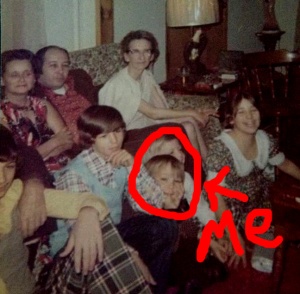
My Family
My father, as I came to learn, would take part-time jobs during the holidays. These jobs were not high paying and certainly not long term. He was Santa at a local mall, the janitor at a local synagogue, and he delivered oil and milk to town residents. You may have noticed I keep writing that I “Later learned”, this is because whatever my father did to earn money he never spoke about it to us kids. I only learned about these yearly odd jobs after my father’s passing.
I have yet to be named CEO or start a company that makes millions of dollars a year, but, I do get a gleam in my eye much like David when I speak of my own father. Our parents sometimes teach us things we never even know they taught us, and I have certainly learned much from both of my parents. Whether a multi-million dollar company is in my future I cannot say, but I did notice there was one other time David’s eyes lit up when he spoke, it was when he spoke of his own six year old daughter. Much like David, my children are my life, if I can someday bring a gleam to their eyes, then CEO or not, I will feel like a million bucks!
- David talked about his mentor, who committed to investing in Digital Surgeons but died before he could follow through. He said the greatest advice he’d ever gotten was from this man—“Fast nickels are better than slow dimes.” What did this mean? How might you relate this to your own life?
David spoke very highly of his mentor Bill. Bill was about to invest in Digital Surgeons when he suddenly passed away. David shared a piece of advice that Bill gave to him; “Fast nickels are better than slow dimes.” David himself said this refers to that practice of taking what you can get. Never stop trying for that mega-account but also do not pass up smaller work along the way. My own father often said something similar about a bird in your hand and two birds in a bush.
Both David’s mentor Bill and my own father were in fact correct. Money is money and work is work. Some jobs you grind out with purposeful effectiveness, they are a means to an income. Other jobs you might see something special, an opportunity perhaps, or maybe inspiration. Ultimately all jobs you do define you. The small and the large, the special and the routine. I live my life this way, I always have. This philosophy comes in part from my father, he instilled the concept of an honest day’s pay for an honest day’s work inside of me years ago. My competitive nature is responsible for the rest. I believe in winning. To me, winning is not everything it’s the only thing. If I can’t be the best I’ll be the toughest, if am not the most talented I will make up for it by working the hardest and if I’m not the smartest I’ll do more homework. It’s just the theory of me written by me, but it’s the only me that I know how to be.
- Name two things you learned in this lecture. What did you discover?
 I learned a lot from listening to David Salinas. One of the things David talk about was a website called Twitch.tv which is a live streaming website owned by Amazon. One of the biggest innovations of the 20th century was video games. When I was a kid we never had money for video games and we generally spent our time doing outdoor activities. I was aware of things like Atari and even played a game or two of Pac-Man, but I would never consider myself a “gamer”.
I learned a lot from listening to David Salinas. One of the things David talk about was a website called Twitch.tv which is a live streaming website owned by Amazon. One of the biggest innovations of the 20th century was video games. When I was a kid we never had money for video games and we generally spent our time doing outdoor activities. I was aware of things like Atari and even played a game or two of Pac-Man, but I would never consider myself a “gamer”.
Video gaming has only gotten bigger and better in the 21st century but still I never gravitated towards them. I suppose I just always considered the games a waste of time, frankly just the thought of sitting and playing video gamed bored me.
After hearing David discuss his own business venture using Twitch.tv I decided to ask my children about it. Even though I have managed to avoid the video game craze my children have been fully enveloped since an early age. I sat at the dinner table and asked my two boys “Have you ever heard of something called Twitch.tv?” They immediately responded with enthusiasm that told me this was something that was cutting edge and I was missing the boat. It takes a lot to excite kids these days and from their descriptions of Twitch I knew this was something I needed to learn more about.
Twitch.tv’s 2014 annual report contains some staggering numbers. 16 Billion minutes watched/month, 100 million unique viewers/month, and 10 thousand partnered channels. These are numbers that tell a story, this is a new market, a big market, and a market with lots and lots of potential. Live streaming TV may be the biggest market for advertising since television, and anyone who has an interest in advertising/marketing would be foolish to ignore it. With a price tag of 970 million dollars, Amazon paid a heavy price to acquire Twitch. They beat out rivals Google and YouTube for the ultimate prize, but if that 2014 annual report is any indication, that price might just seem like a bargain before too long.
http://infospace.ischool.syr.edu/2014/09/04/is-amazon-entering-the-game-market/
http://digiday.com/platforms/amazons-twitch-gaining-ground-ad-platform/
https://moz.com/blog/twitch-phenomenon-live-streaming
![]() Another tool David Salinas spoke about briefly was a company called ADARA. The ADARA Magellan Travel Intelligence does in depth market research and sells that information to advertisers. Its platform provides companies with awareness, such as a consumers purchase patterns, preferences, and behavior patterns. This information allows advertisers to reach their target audiences much more efficiently.
Another tool David Salinas spoke about briefly was a company called ADARA. The ADARA Magellan Travel Intelligence does in depth market research and sells that information to advertisers. Its platform provides companies with awareness, such as a consumers purchase patterns, preferences, and behavior patterns. This information allows advertisers to reach their target audiences much more efficiently.
ADARA uses first party data from more than 80 global travel brands, including United, Delta, Hyatt, Marriott and Hertz. The information is in real time, so advertisers can see what you’re buying and when you’re buying it. They can tell where you’re going to be as soon as you purchase your ticket. They even garner information from customers personalized search databases. That is real and important information. Imagine not only knowing what your consumers are interested in but actually knowing where they’ll be and when.
The key to promoting anything is getting the information about what your promoting in front of the right people. ADARA gives advertisers and marketers a leg up by using up-to-the-minute data combined with targeted messages. Advertisers now have the ability to make intelligent, informed decisions about how to reach customers.
David Salinas is successful indeed but when listening to him speak it isn’t any wonder why he became a success. He is always thinking forward. David is fearless, relentless and confident. One of the things David said was that “to be successful you have to know who you are.” I believe much of David’s success has its roots in this statement. David knows his strengths, his weaknesses and his motivations. I agree with David on this, the journey to success begins inside of ourselves, and it is a journey that has bumps along the way, but if you know who you are you have already got a running start.
http://www.bloomberg.com/research/stocks/private/snapshot.asp?privcapId=54910793




